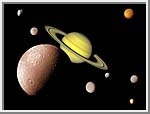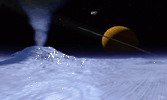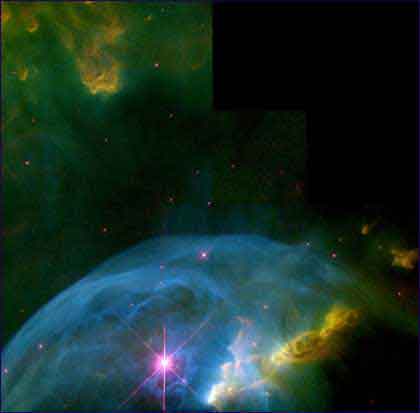

3
4
5
6
7
8
9
10
The Ultimate Science Web-Portal ,and On-Line Magazine Experience. Enjoy your visit.
CNN
NBC
CBS
Reuters
A.P
ITN
BBC
NBN
Yahoo News
Particle Physics
Electromagnetism
Laser Research
Holography
Ion- Propulsion

Presenting The Theory of Subordinate Proplyds:
In keeping with this hypothesis, there is also the theory of the formation of the minor planets or planetary moons, which form their own lunar system around the larger planets.This theory suggests that the minor planets were formed by the ejection from the protostar of micro-bubbles, or burps ,which, although much smaller that those emitted during the formation of the major planets, were nevertheless large enough to contain and transport enough proto-planetary material to produce mini-planets.
These burps were also not large enough to encompass the protostar,as did the major bubbles, but instead were free-flowing ,and were not anchored to, or around any other body during their ejection stage.
Having broken free from the gravitational field of the protostar, they travelled at
tremendous velocity through the protoplanetary bubble encasing the protostar in the primary location.(the closest major bubble , and the most recent one ejected by the protostar).
On nearing the outer boundaries of the major or primary bubble, these micro- bubbles or burps were trapped within the gravitational field of the major planet within that bubble, thus forming a lunar system around it.
In a few instances, some of the bubbles were travelling at such a high velocity that they bounced off the inner walls of the major bubble,and were then trapped within the gravitational field of the major planet, but travelling in the opposite direction , with an opposing spin, to boot.
As the minor planets were formed and cooled, and their respective bubbles subsided, the gravitational fields encasing the bubbles remained, although they also subsided and flattened out around the minor planets. These fields also interlaced and overlapped within each other to form an elliptical proplyd surrounding the minor planets, similar in shape to a propeller, which revolves around the major planet with its constituent minor planets nestled safely within .
Over the eons, one end of the subordinate proplyd becomes anchored to the major planet's equator , or a t least to its gravitational pivot, while the other end glides freely through space.
The subordinate proplyd performs its duty as protector of its trapped constituent minor planets by maintaining the stability of its immediate environment through equalization of forces, and absorption of shocks and violent events through shock-distribution within its infrastructure.
Evidence of the existence of a subordinate proplyd may be established by monitoring the activities and travel of the planets within it . Its outer boundaries may be verified by establishing the maximum travel of the minor planets in relation to each other. If the minor planets remain in a close formation as they orbit the major planet, then there is a strong possibility that they are anchored to a subordinate proplyd.
On the other hand, if the distance between any two minor planets within the same planetary system exceeds 180 degrees, as they orbit the major planet, then there is a strong possibility that no subordinate proplyd exists.
There is also a strong possibility that at the point where the subordinate proplyd is anchored to the major planet, high radioactive,gravitational and electrical activity may be prevalent.
If proven to exist, the subordinate proplyd may prove some day to be a very viable parameter within our enigmatic solar-system.
Remember, you saw it here first!
On SciMax2k, Mar. 19,2001.




